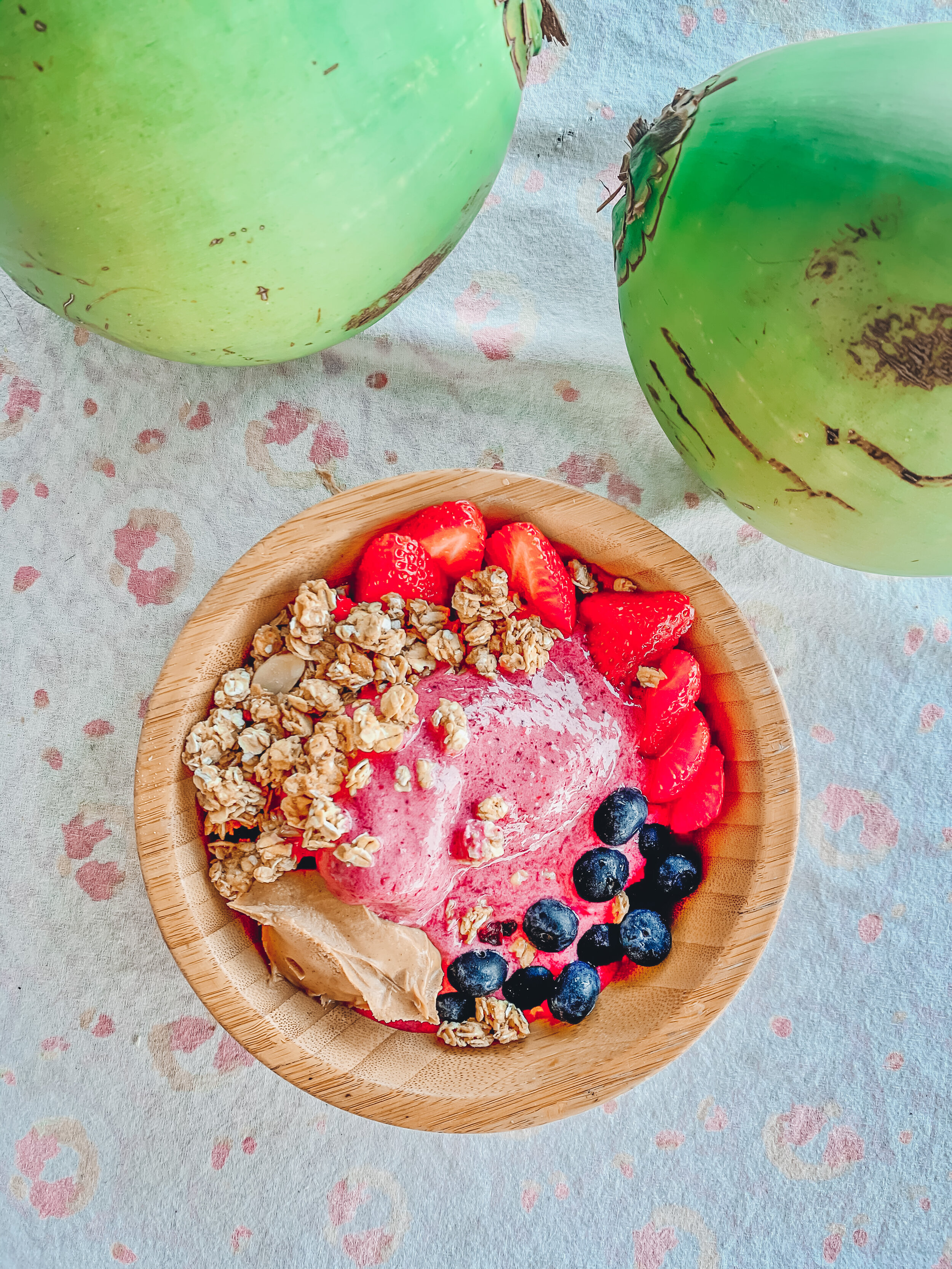Making the Switch : from Meat-Eaters to Plant-Based Body-Nourishers

It took moving to an island and finding ourselves nearly flat broke during our first “Off-Season” to learn what it meant to properly nourish our bodies … in a way that we could actually afford.
Prior to moving to St John, we lived what one might call an “ordinary” life (“ordinary,” that is, for a middle-class white American family - a very privileged “ordinary” if you ask me). We both worked as teachers in different parts of New Orleans, and lived in a very cute shotgun-style 700-square-foot apartment Uptown just off of Oak Street, with a sweet little yard and a front porch, on which we spent most of our evenings.
Our work days were long (shout out to all you teachers out there - rarely given nearly enough credit for how much effort goes in to educating little ones). We’d get home on average around 6 PM, exhausted from an early morning, a full day on our feet, after-school coaching and tutoring, voices raspy from using that “teacher voice” for hours on end. All we wanted to do was put our feet up and melt into the couch (with a stack of papers to grade…).
Because we were consistently exhausted, we put little thought or effort into what we ate - there’s only so much energy one can exert in a day. This meant that most nights consisted of either take-out or pre-made meals. (Shout out to Trader Joe’s frozen mac-n-cheese!) What we didn’t realize at the time was that our lack of good nourishment perpetuated our exhaustion; it was a response to the problem, which in turn perpetuated the problem!
During our first year on St John, our diet was relatively similar to our diet in New Orleans, as we were still working as full-time teachers, while flipping a house AND running a vacation rental. Because the cost of living here is so high, though, we ate even LESS healthy food and even more processed “easy” meals. Similarly, we felt exhausted day after day (no doubt because of how hard we were working, but the food we were feeding ourselves wasn’t helping either).
So, we made a life-altering shift.
Mixed-Berry-Coconut Smoothie Bowl, topped with fresh fruit
Pineapple stuffed with Thai Pineapple-Coconut Curry Fried Rice
During September / October 2019, we experienced our first “Off-Season” as vacation rental hosts; having vastly miscalculated our season’s earnings (as many an amateur does), we had to scavenge to find ways to feed ourselves … and what came from it was extraordinary.
When Hurricane Season hit, we went from having upwards of $6,000/month in rental income alone during the summer months, to just $533.50 in rental revenue during the month of October, which barely covered even our electrical bill. With a fat mortgage of nearly $3,200/month along with other payments, we found ourselves scrambling for money in (nearly) every way possible. I worked as a homeschool teacher, while Kevin ventured into the world of construction and property management. (We had decided that teaching full-time wasn’t for us, as we wanted to delve more into our own personal ventures and focus on rebuilding our house.)
Needless to say, this was a period of high stress levels and severe anxiety.
Initially, during those months, we survived off of rice and cans of beans, but we got to a point where even those items became (almost) out of reach for us. What we learned next was really the turning point for us.
Because we live in a tropical region, fruit grows all over - all you have to do is look. It sounds silly that we didn’t resort to this sooner, but we were so conditioned to shop at grocery stores and buy labeled goods, that the thought of eating what naturally grows in our environment hadn’t even crossed our minds.
With a little searching, we found that papayas, coconuts, mangoes, and starfruit all grow naturally within a very small radius of our home. We also learned that if you go to the grocery store on specific days (when new shipments come in off the barge), the “old” fruit (that no one else wants) is often on sale for really affordable prices. It may not look super appetizing as is, but if you freeze it and throw it in a blender, it makes for delicious smoothie material.
So, we started eating plants. Lots of them. And within days, we could feel the energy levels in our bodies rising. We felt all-around healthier, fuller, and just happier. And we haven’t looked back.
Making this shift toward a plant-based diet has helped us on so many levels - financially, health-wise - both physically and mentally - plus it’s better for the environment! Sure, we eat cheese on occasion, sometimes even a bit of meat here and there, but the BULK of our food consists of fruits and vegetables, grown and picked locally wherever possible.









